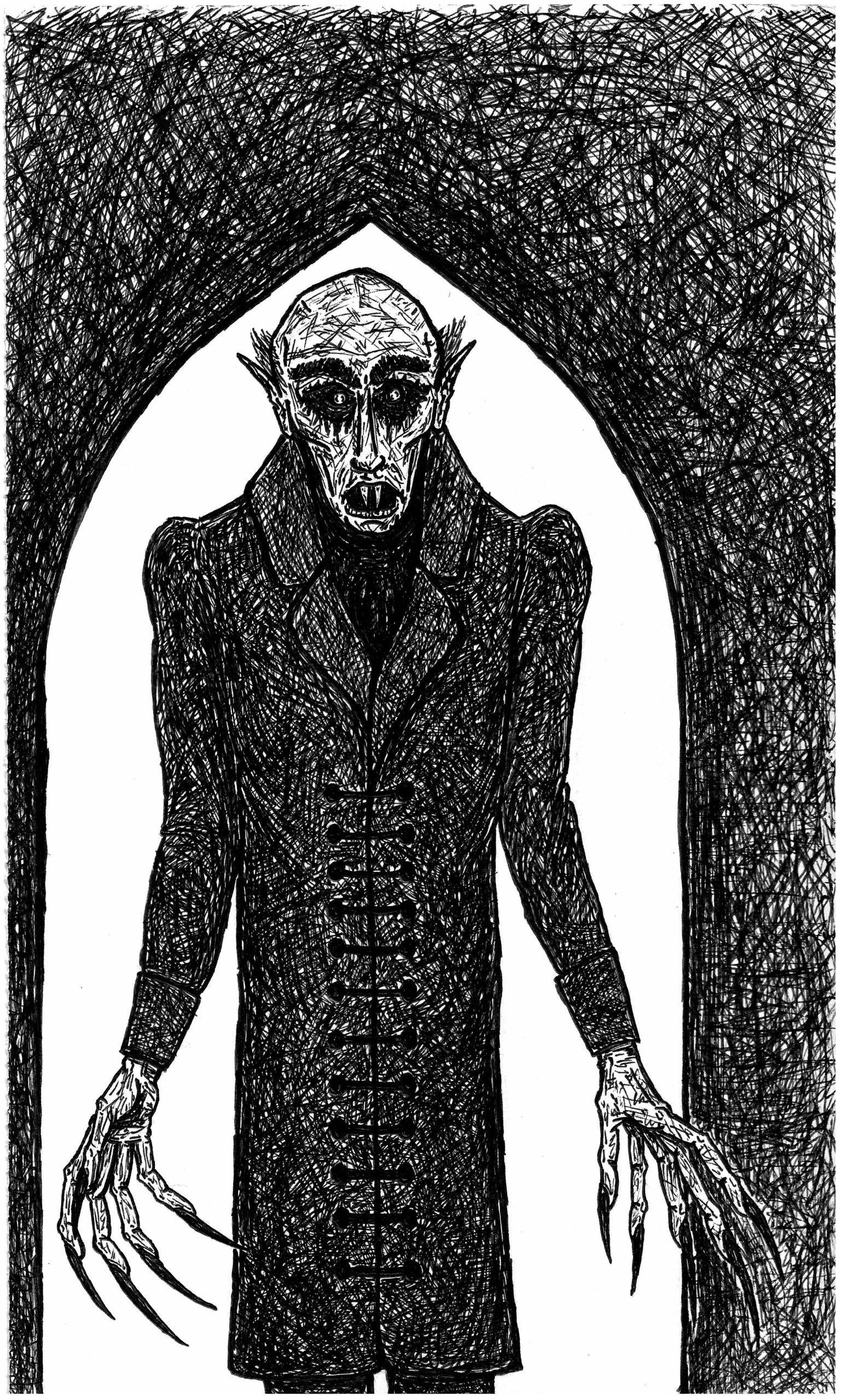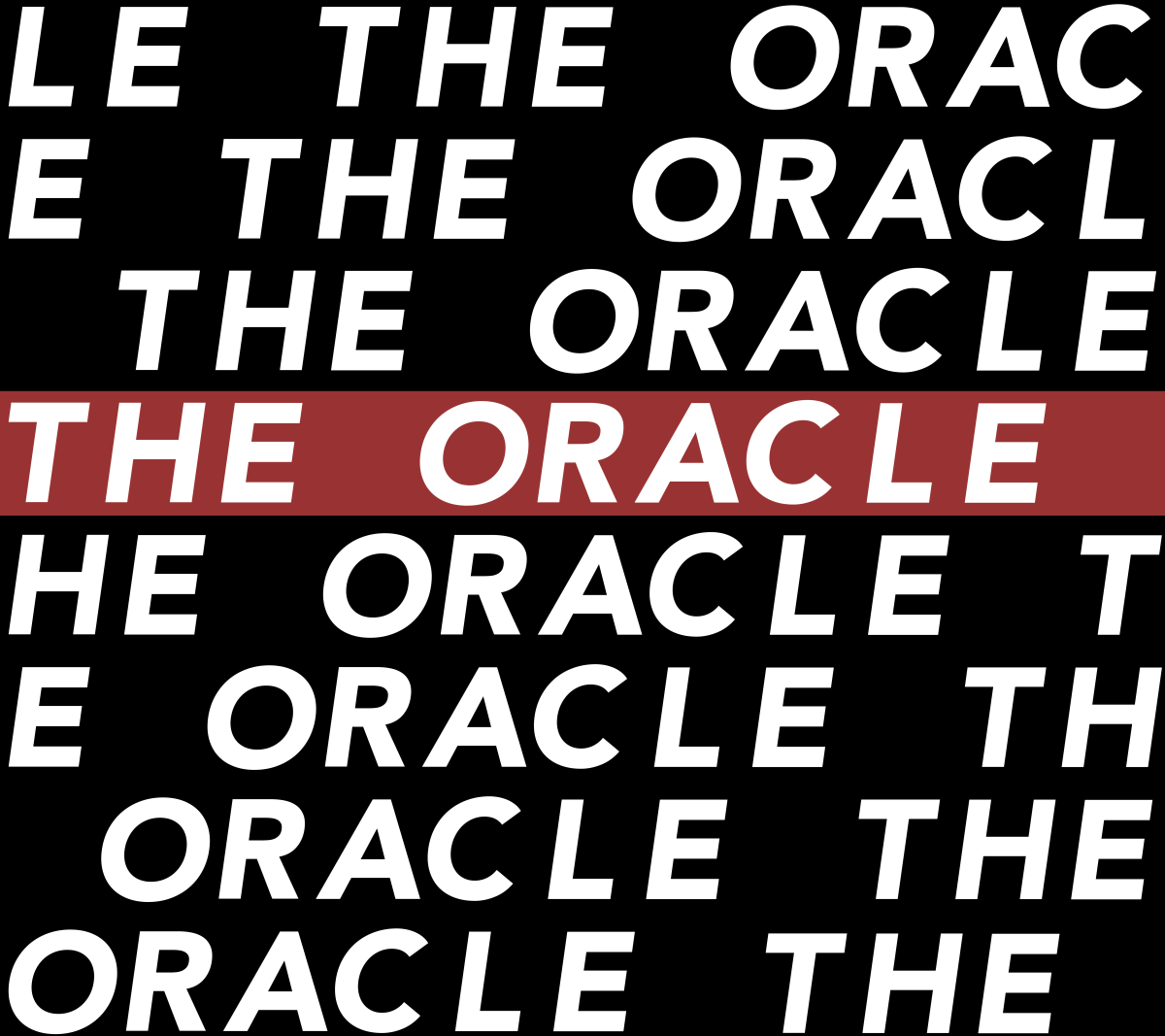“Nosferatu. Does this word not sound like the midnight call of the Bird of Death? Do not utter it, or the images of life will fade—into pale shadows and ghostly dreams will rise from your heart and feed your Blood.”
When one is forced to consider what the most influential and important films of all time actually are, the title “Nosferatu” is bound to come up. After premiering in the German Weimar Republic in 1922, the film was sued by the Stoker estate over violating the copyright of the 1897 novel “Dracula” and was ordered to have every single print destroyed. Despite this setback, five copies of the film managed to survive, and it is now hailed as a proper masterpiece in its own right.
The plot followed a young German real estate agent named Thomas Hutter (played by Gustav von Wangenheim) who was sent to Transylvania to sell an abandoned manor to the reclusive and nocturnal Count Orlock (portrayed by Max Schreck.) After meeting with Orlock, Hutter accidentally cut himself while eating, and Orlock laments about the waste of “…precious blood” while also making suggestive comments about the neck of Hutter’s sick wife, Ellen (played by Greta Schröder.)
While Hutter has begun to suspect that Count Orlock may have some nefarious motivations, he does not prevent the deal from going through. However, when he later learned of his true nature as a vampire, it was already too late. Orlock massacred the crew of a ship, and sailed it to his new property, and brought a deadly plague carried by rats along with him.
An important thing to consider is the historical background in which the film was made. Less than four years earlier, World War I came to a close and resulted in the Treaty of Versailles which crippled the German economy and led to a period of rapid hyperinflation and extreme social turmoil. The return of soldiers in 1918 also facilitated the spread of the Spanish Flu, a deadly pandemic that killed over 5% of the global population and forced the world into quarantines eerily similar to our experiences with COVID-19. When viewed through this lens, the film’s depiction of disease carrying rats becomes a lot more relatable to a modern day audience.
Because the German people needed an escape from the hardships of life, many of them began turning to the cinemas for entertainment. An artistic movement, called German-Expressionism arose, where films began to eschew realism to best capture the emotions of the characters. This resulted in movies being made with more formalist and exaggerated elements, like painted on shadows, slanted camera angles and abstract set designs becoming commonplace in films (such as “Nosferatu”). This period lasted until the German economy briefly stabilized, which led to cheaper American films being bought in bulk, which caused a steep decline in the domestic German film industry.
A surprising legacy that this film has had on popular culture is in giving the archetype of the vampire a fatal weakness to sunlight. Before this movie, vampires did not commonly share this foil, but Orlock’s iconic death scene has managed to reverberate throughout the collective unconscious so much that sunlight is as famous a vampire repellent as crosses and stakes are. An interesting technique that the film used to differentiate between day and night despite being shot on black and white film is the use of color tinting. Different rolls of monochromatic film were developed and tinted with a blue tint to signify night, which allowed the audience to distinguish between the two times of day.
Despite being a horror movie, this is one of the very few films to be officially endorsed by the Catholic Church. In 1995, under the permission of Pope John Pauł II (who was a theater student in his youth) the Vatican published a list of 45 films in honor of the 100th anniversary of cinema, and “Nosferatu” was chosen as one of the 15 best examples of art in film. Quite simply put, it is very rare to have something be “Pope approved,” much less a horror movie with satanic elements, which only further serves as a testament to its quality.
As mentioned previously, the film has been critically acclaimed and heralded as one of the greatest movies ever made. One of the most influential and well respected film polls is the decennial Sight and Sound list, where in 2022 “Nosferatu” was tied for the 196th spot on the list.
One of the more surprising and notable places that “Nosferatu” was parodied was on the show “SpongeBob SquarePants,” where a cutout depiction of Orlock works the night shift at the Krusty Krab. As someone who never watched SpongeBob, I was quite surprised at the show’s willingness to parody a silent classic. Still, having more people exposed to this historic film is by no means a bad thing.
Despite being over 102 years old, this story will be returning to theaters. Director Robert Eggers, who is best known for 2019’s “The Lighthouse” and 2015’s “The VVitch” is releasing a remake of the film on Christmas this year. He has cast Bill Skarsgård (who is most famous for playing Pennywise in 2017’s “It”) as Orlock, with Willem Dafoe playing an analog for Professor Van Helsing and Nicholas Hoult playing Hutter. Interestingly, this is not the first time Willem Dafoe has been involved with “Nosferatu”, as he actually portrayed Max Schreck in the 2000 film “Shadow of the Vampire” and received an Oscar nomination for Best Supporting Actor.
So in conclusion, I highly recommend that you watch this public domain classic. My rating for the legendary “Nosferatu” is a 9/10.

Story continues below advertisement



